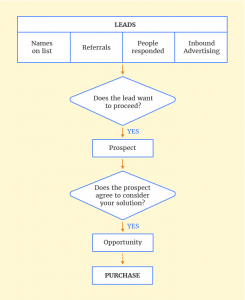— November 13, 2018
![5 Ways to SET Revenue Targets at Your Agency for 2019 [Part 2] Heres how to set revenue targets for your agency for your annual planning!](https://www.onlinesalesguidetip.com/wp-content/uploads/2018/12/5-Ways-to-SET-Revenue-Targets-at-Your-Agency-for-2019-Part-2.jpg)
Wondering how to set revenue targets for 2019? You have five options; see which is best for you.
As I shared in Part 1, you’ll enjoy many benefits —including stress reduction—when you create annual revenue goals. But… how do you actually set revenue targets for 2019?
That’s what I’ll cover here today in Part 2. We’ll review five options, and how to pick the right one(s) for you.
Next week in Part 3, we’ll look at how to translate your annual revenue target into a revenue plan.
In Part 4 on November 21st, we’ll look at how to improve your chances at actually hitting your 2019 revenue targets.
The target-setting process works best if you have a few years of revenue history, and you’re not planning to execute a major shift in services and/or target market between 2018 and 2019. (Otherwise, you’ll want to use the “Zero-based” option below.)
Let’s dive in!
Your 5 Options to Set Revenue Targets
At a high level, there are five approaches:
- Last Year+ (add a growth percentage to last year’s revenue)
- Capacity (billables based on “units sold” at projected employee capacity)
- Sales Quotas (sum the sales team’s quotas)
- Zero-Based (start from scratch; useful when making major strategy shifts)
- Hybrid Approach (combine two or more options)
Let’s take a closer look at each!
Option #1: Based on “Last Year+”
What: Take last year and add a percentage on top of that. For instance, if you want to grow 40%, take last year and add 40%—that’s your next-year target.
- Pros: Helpful when you’ve been growing steadily, and when you’re seeking to grow 30% or less in the coming year.
- Cons: Less helpful when your past growth has fluctuated, when you’re seeking to grow 50% or more, or when you’re planning a major shift in business strategy (e.g., entirely new services, new target market, or both).
Good Choice When: You’ve been growing steadily, and next year’s growth will likely to be similar—or slower—than recent years.
Option #2: Based on Capacity
What: Estimate revenue based on your current—or planned—capacity, in terms of billables per employee. Includes adjustments for raising prices and/or adding new services.
- Pros: Helps you identify whether to hire people or grow with the team you already have.
- Cons: You can’t guarantee that employees won’t leave during the year. This approach may also create a disincentive to grow your per-capita revenue.
Good Choice When: You want to match revenue to team capacity, especially if you’ve over-hired in the past.
Option #3: Based on Sales Quota
What: Sum-up the sales quotas across your sales team.
- Pros: If everyone hits their sales targets (and your delivery team can fulfill the work), you can grow revenue substantially.
- Cons: Just because the quotas exist… doesn’t mean that they’ll hit the quotas. And you still need to deliver on it.
Good Choice When: You have multiple salespeople and can risk-manage things if one or more salespeople slip… or leave mid-year.
Option #4: Zero-Based
What: Start completely from scratch—particularly for any revenues based on brand new services. For more, see this McKinsey article on the resurgence of zero-based budgeting (ZBB).
- Pros: Helpful when you’re adding new services, if you aren’t sure how successful you’ll be in selling to a new target market, or when you have high growth goals in the coming year.
- Cons: Significantly more time-consuming than “last year+” approach. Inherently low-fidelity—you’ll never be sure how accurate this approach will be until you’ve seen the results.
Good Choice When: You’re adding new services, shifting target markets, or seeking to grow 80% or more.
Option #5: Hybrid Approach
What: Combine two or more approaches above.
- Pros: Several factors are high-impact for your agency.
- Cons: There’s not a single “right” hybrid approach; you’ll need to customize to your agency.
Good Choice When: You need to juggle factors. For instance, you might start with “Year Before+” and compare that to what capacity-based would indicate, and review how that compares to this year’s sales quotas.
OK—so which is the right approach for you? Let’s evaluate the options!
Picking the Right Approach(es) for Your Agency
The right approach depends on your goals and situation. Which sounds like you?
- You want to consider all angles: Hybrid Approach
- Sales have grown steadily: “Year Before+”
- You’re radically shifting your business strategy: Zero-Based
- You’ve over-hired in the past: Capacity-Based
- Your sales team is outstanding: Quota-Based
This is an important topic—now’s the time to try a few options, before you dig into creating a revenue plan in Part 3.
But then… sorry, you’re not done yet.
Budgeting for Plans A, B, and C
Looking ahead to when you translate the revenue plan to your budget, I recommend evaluating three different scenarios:
- Plan A: You successfully grow to hit your 2019 revenue target.
- Plan B: Instead of growing, you’re flat compared to 2018.
- Plan C: You shrink after losing your largest client or two.
I hope you don’t need to use Plan B and Plan C—but you’ll be glad you created them before things become an emergency!
Next Up: Turning Your Target into a Plan
In Part 3 next week, I’ll share how to convert your revenue target into a revenue plan for 2019. In Part 4, I’ll share how to maximize your chances at hitting your revenue target in 2019.
Question: How do you set revenue targets at your agency?
Business & Finance Articles on Business 2 Community
(65)
Report Post







